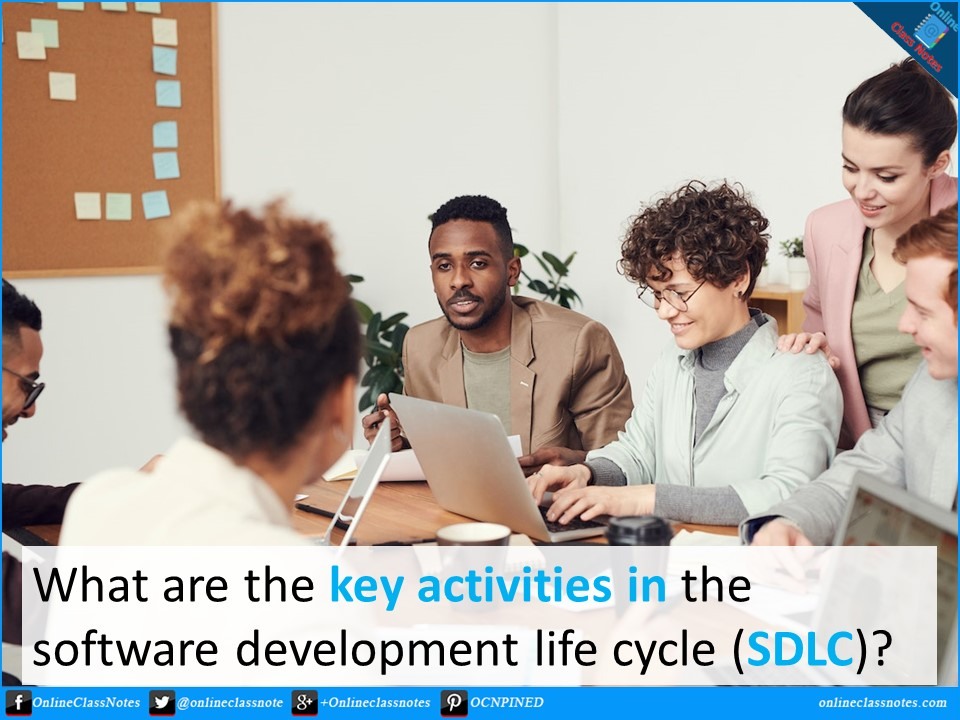Exploring the Key Activities in the Software Development Life Cycle (SDLC)
Introduction:
The Software Development Life Cycle (SDLC) is a systematic and structured approach to developing software applications. It provides a framework for software engineers to plan, design, develop, test, deploy, and maintain software systems.
Key activities in software development life cycle (SDLC)
1. Requirements Gathering and Analysis:
The first step in the SDLC is gathering and analyzing the software requirements. Software engineers work closely with stakeholders, including end-users and clients, to understand their needs, expectations, and objectives. The goal is to identify and document the functional and non-functional requirements that the software must meet. This phase involves conducting interviews, workshops, and brainstorming sessions to clarify and prioritize requirements.
2. System Design:
Once the requirements are defined, the system design phase begins. Software engineers create a high-level design that outlines the system architecture, components, and modules. They define how different parts of the software will interact and communicate with each other. The design may include system diagrams, flowcharts, data models, and user interface prototypes. This phase helps in visualizing the software’s structure and ensures that it aligns with the identified requirements.
3. Implementation and Coding:
In the implementation phase, software engineers start writing code based on the design specifications. They follow programming languages and coding standards to develop the software application. This phase involves translating the design into actual programming code, implementing algorithms, data structures, and business logic. Proper documentation, comments, and version control are maintained to facilitate collaboration and future maintenance.
4. Testing:
Testing is a critical phase in the SDLC, where software engineers ensure that the developed software meets the desired quality standards. Different testing techniques, such as unit testing, integration testing, system testing, and acceptance testing, are employed to identify and fix defects. Test cases are designed to validate the software’s functionality, performance, reliability, and security. This phase aims to catch any bugs, errors, or inconsistencies in the software and ensure its stability and robustness.
5. Deployment:
Once the software has passed the testing phase, it is ready for deployment. The deployment phase involves preparing the software for installation and release to end-users. This may include creating installation packages, configuring the software for specific environments, and documenting installation instructions. Software engineers collaborate with system administrators and deployment teams to ensure a smooth transition from development to production.
6. Maintenance and Support:
After deployment, the software enters the maintenance phase. Software engineers provide ongoing support, monitor performance, and address any issues or bugs reported by users. They may release updates, patches, or new versions to enhance functionality, improve security, or fix identified defects. Maintenance may also involve scaling the software to accommodate increasing user demands or integrating it with other systems.
Conclusion:
The Software Development Life Cycle (SDLC) encompasses a series of key activities that guide software engineers through the process of developing software applications. From gathering requirements to deploying the software and providing ongoing maintenance, each phase plays a crucial role in ensuring the successful delivery of high-quality software solutions. By following the SDLC, software engineers can effectively manage projects, adhere to industry best practices, and deliver software that meets user expectations while maintaining efficiency, reliability, and scalability. Understanding the key activities in the SDLC enables organizations to optimize their software development processes and deliver innovative and robust software solutions to address evolving user needs.
